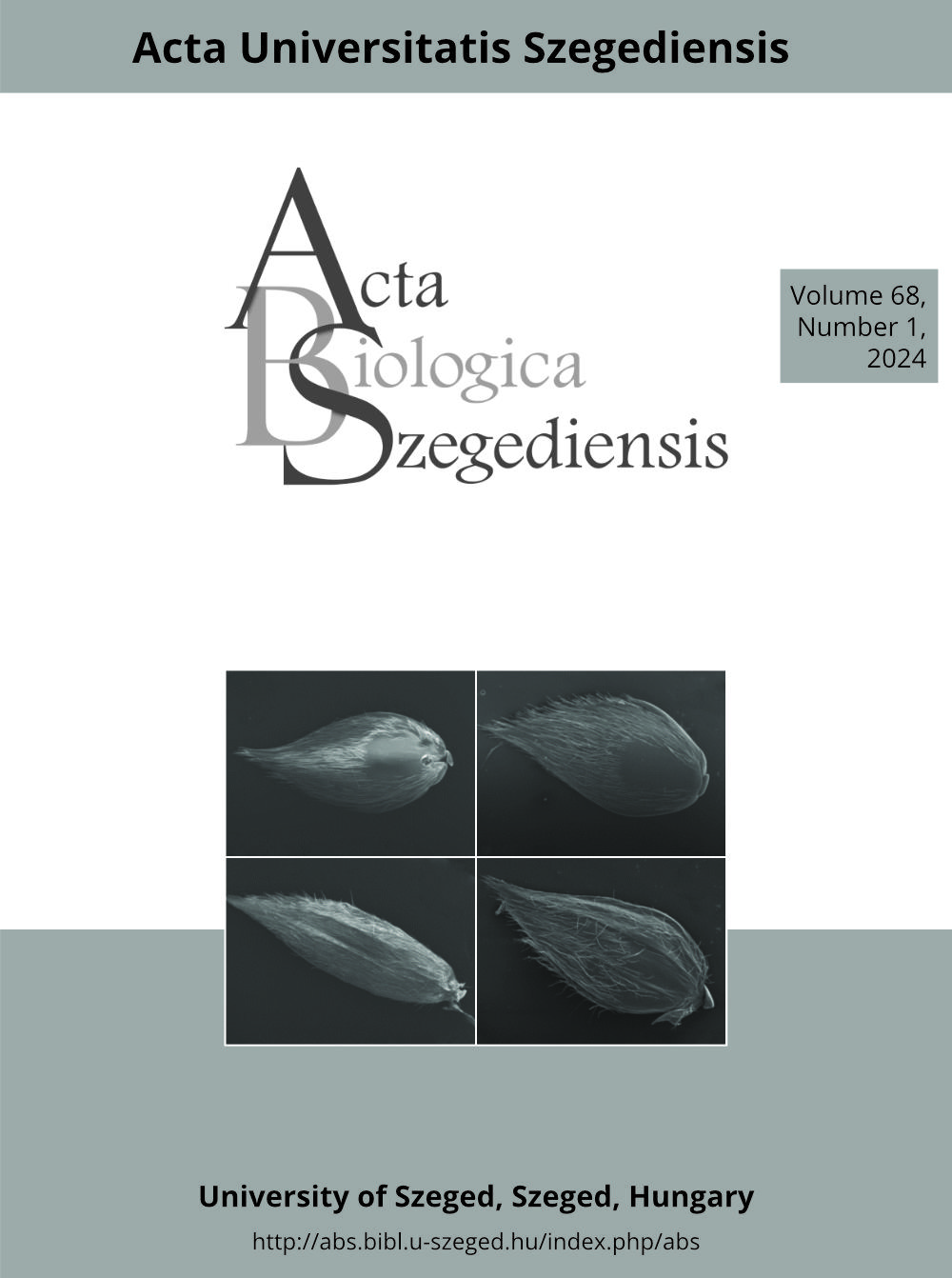Effect of Arthrospira platensis extracts on glycation of BSA
DOI:
https://doi.org/10.14232/abs.2024.1.23-30Keywords:
AGEs, antiglycating potential, antioxidant, Arthrospira platensisAbstract
Glycation, a non-enzymatic interaction between the carbonyl groups of sugars and the amino groups of macromolecules, leads to the formation of deleterious advanced glycation end-products (AGEs). Diseases such as neurodegenerative disorders, cardiovascular complications, and diabetes are characterized by the involvement of glycated products. This study investigated the antioxidant and antiglycation potential of a well-known cyanobacterium, Arthrospira platensis, through its extract. In an in vitro glycation system involving BSA and glucose, A. platensis PCC 7345 extracts (prepared in water- APA and buffer- APB) were incubated at 37 °C for 28 days. Antioxidant assays like ABTS, DPPH and NO Radical Scavenging Assay was performed. Quantification of glycation products was performed using spectroscopic methods, including browning, NBT assay, individual AGEs and fluorescent AGEs assessment. Both extracts demonstrated inhibitory effects on fructosamine content and AGEs, within the glycation system. Both APA and APB extracts from A. platensis effectively reduced browning reactions, with APA showing a slightly higher efficiency (51.67%) than APB (48.07%). Fructosamine assays revealed substantial reductions in ketoamine formation for both extracts, while the fluorometric determination of total AGEs indicated that APB exhibited superior antiglycating potency compared to APA, consistent with outcomes from fructosamine assays and supporting its effectiveness in attenuating glycation processes.
Downloads
References
Acevedo-Fani A, Dave A, Singh H (2020) Nature-assembled structures for delivery of bioactive compounds and their potential in functional foods. Front Chem 8:564021.
Ahmad MS, Ahmed N (2006) Antiglycation properties of aged garlic extract: possible role in prevention of diabetic complications. J Nutr 136(S3):796S-799S.
Ahmad S, Khan MS, Akhter F, Khan MS, Khan A, Ashraf JM, Pandey RP, Shahab U (2014) Glycoxidation of biological macromolecules: a critical approach to halt the menace of glycation. Glycobiology 24(11):979-990.
Balyan P, Ola MS, Alhomida AS, Ali A. (2022) D-Ribose-induced glycation and its attenuation by the aqueous extract of Nigella sativa seeds. Medicina (Kaunas). 2022;58(12):1816.
Ding H, Ni M, Zhang G, Liao Y, Hu X, Zhang Y, Gong D (2020) The inhibition of oleanolic acid on protein non-enzymatic glycation. LWT 125:109253.
Getachew AT, Jacobsen C, Holdt SL (2020) Emerging technologies for the extraction of marine phenolics: opportunities and challenges. Mar Drugs 18(8):389.
Janská P, Knejzlík Z, Perumal AS, Jurok R, Tokárová V, Nicolau DV, Štěpánek F, Kašpar O (2021) Effect of physicochemical parameters on the stability and activity of garlic alliinase and its use for in-situ allicin synthesis. PLoS One. 16(3):e0248878.
Johnson RN, Metcalf, PA, Baker JR (1983) Fructosamine: a new approach to the estimation of serum glycosylprotein. An index of diabetic control. Clin Chim Acta 127:87-95.
Khan MN, Gothalwal R (2018) Herbal origins provision for non-enzymatic Glycation (NEGs) inhibition. Front Med Chem Drug Discov 2(1):10-015.
Kikuchi S, Shinpo K, Takeuchi M, Yamagishi S, Makita Z, Sasaki N, Tashiro K (2003) Glycation - a sweet tempter for neuronal death. Brain Res Rev 41(2-3):306-323.
Kumar D, Ali A (2019) Antiglycation and antiaggregation potential of thymoquinone. Nat Volatiles Essent Oils 6:25-33.
Kumar D, Dhar DW, Pabbi S, Kumar N, Walia S (2014) Extraction and purification of C-phycocyanin from Spirulina platensis (CCC540). Indian J Plant Physiol 19(2):184 -188 .
Lai YH, Puspanadan S, Lee CK (2019) Nutritional optimization of Arthrospira platensis for starch and total carbohy-drates production. Biotech Prog 35(3):e2798.
Paramanya A, Farah MA, Al-Anazi KM, Devkota HP, Ali A (2023) Exploring the potential of Spirulina (Arthrospira platensis) aqueous extract in preventing glycation of hemoglobin and pBR322 plasmid. Pharmacogn Mag 19(3):581-591.
Paramanya A, Jha P, Ali A (2019) Bioactive compounds in Spirulina sp.: Applications and potential health effects. In Sundaray JK, Rather MA, Eds., Next Generation Research in Aquaculture, BioGreen Books. pp.197-218.
Rondeau P, Armenta S, Caillens H, Chesne S, Bourdon E (2007) Assessment of temperature effects on beta-aggregation of native and glycated albumin by FTIR spectroscopy and PAGE: relations between structural changes and antioxidant properties. Arch Biochem Biophys 460 (1):141-150.
Sadowska-Bartosz I, Bartosz G (2015) Prevention of protein glycation by natural compounds. Molecules 20(2):3309-3334.
Thornalley PJ, Battah S, Ahmed N, Karachalias N, Agalou S, Babaei-Jadidi R, Dawnay A (2003) Quantitative screen-ing of advanced glycation end products in cellular and extracellular proteins by tandem mass spectrometry. Biochem J 375(Pt 3):581-592.
Thornalley PJ, Rabbani N (2014) Detection of oxidized and glycated proteins in clinical samples using mass spectrometry - A user’s perspective. Biochim BiophysAc t a 184 0 (2):818-829.
Downloads
Published
How to Cite
Issue
Section
Funding data
-
Research Society for the Study of Diabetes in India
Grant numbers RSSDI/HQ/Grants/2017/342








